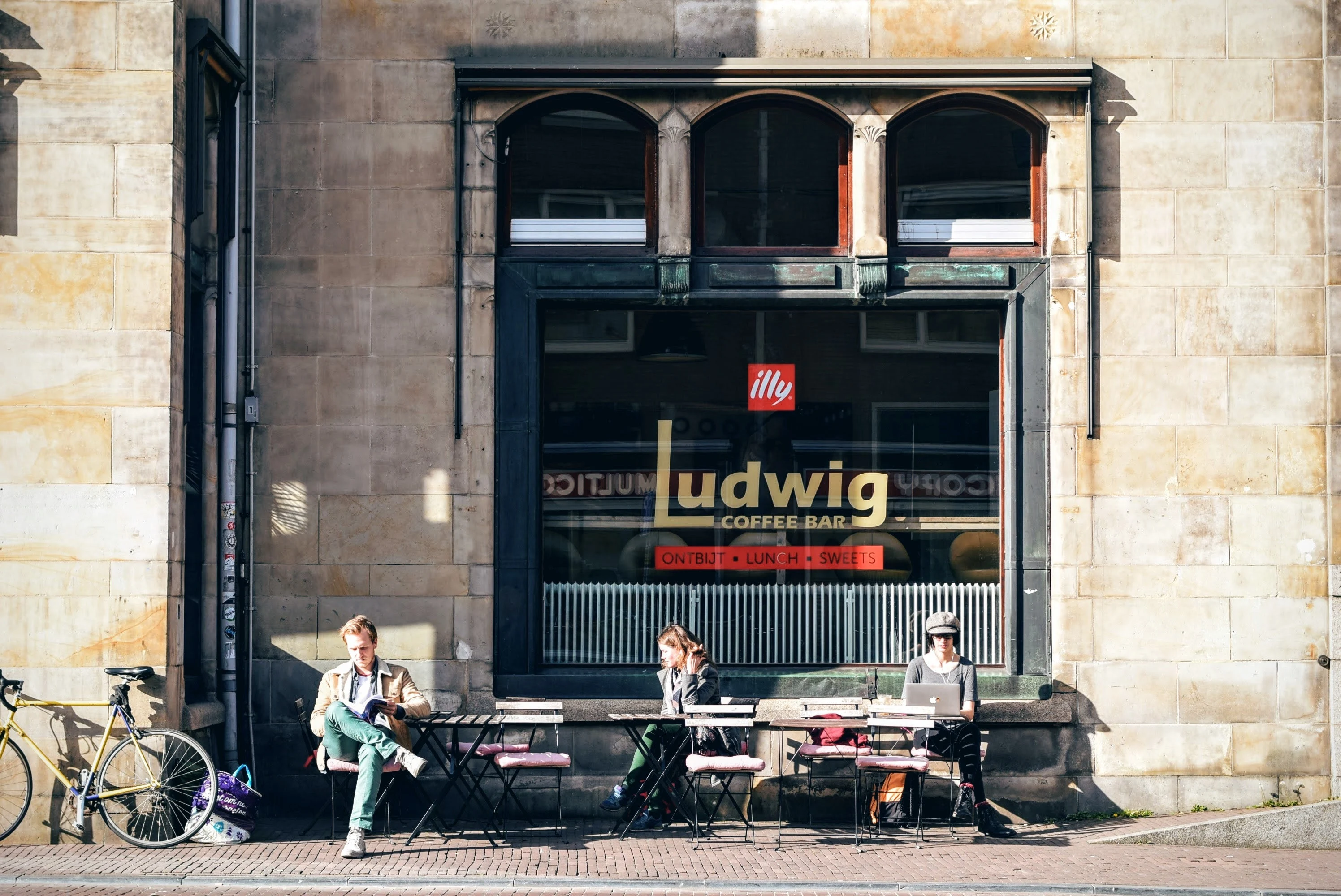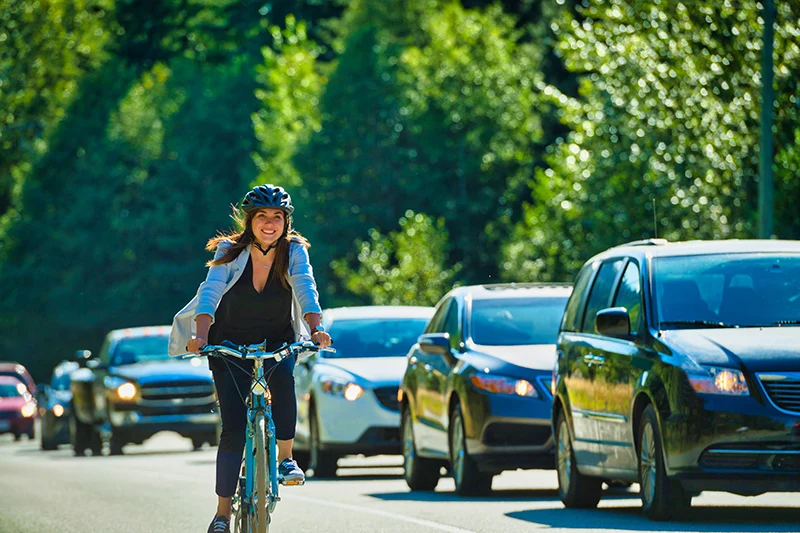
Crafton Tull
Since 1963Engineers have long designed roadways for vehicular use, but multi-modal transit and place-specific purpose are newer elements in the way roads are imagined today. Thoughtful roadway design incorporates these principles in both new construction and road rehabilitation projects.
Roads inherently have lanes for cars, but bike lanes, sidewalks, and on-street parking can transform a plain street into the Swiss Army knife version of transportation.
Street design can be a tool to create places where people want to be: where they live, shop, and dine. Street revitalization can inject new purpose into established areas.

Build for today, plan for tomorrow
Current and future use should play a role in how city engineers and planners create a path through their cities. The continued rise in cycling as a recreational activity as well as a means of transportation is an important consideration. While most workers commute by car, many people are choosing to cycle or walk to work.
Most days, there are bicycles in the bike rack outside of the Crafton Tull offices as many of our employees, myself included, take advantage of good weather and safe routes to work. Biking to work breaks up the daily grind of fighting traffic and allows you to take in details of your environment, unlike commuting in a car. Additionally, biking to work is exercise without feeling like exercise; it is a pleasant experience to travel this way.
Mixed modes of transportation can take pressure off a roadway and add an economic boost. Cyclists and pedestrians spend more than car riders because they make more trips at slower speeds. It is easier to make the impulse decision to drop in a restaurant or shop when traveling by bike or foot than it is by car as you are speeding down the roadway.
However, many people will not bike a route they don’t feel is safe. The more vehicles traveling at higher speeds, the less likely a cyclist will feel comfortable. The best way to encourage and support multi-modal transportation is to increase safety.

What can a city do?
On a recent multi-use development, we pre-planned for circulating pedestrians by adding on-street parking, narrower vehicular lanes to slow traffic down, and wider sidewalks to make pedestrians feel safe. The developer wanted to provide a place where people could live, work, and play by encouraging users to park their cars and walk or pedal wherever they go. The city engineer worked in cooperation with the developer to reduce a four-lane road to two lanes with on-street parking to accomplish the increased pedestrian use.
Cities don’t have to wait for developers to take the next step. Some cities have converted four-lane streets into two vehicular travel lanes, a central turn lane, and a cycling lane or a separated side path.
Good candidates for conversion would be city streets with higher than average crash rates in need of traffic calming and streets with overly-wide travel lanes. Drivers go faster on wide, under-traveled roads, creating crash patterns per the Federal Highway Administration (FHWA). In particular, four-lane roads frequently see an increased number of rear-end collisions that can be remedied with the reconfiguration to a three-lane road with expanded bike and pedestrian access.
Studies have shown a 6% reduction in crash frequency on roads converted from four lanes to three. This results in a win-win scenario with the resulting space to accommodate active transportation.
Roadways with average daily traffic anywhere between 8,500 to 23,000 vehicles per day are good candidates for four-to-three lane conversion, according to several studies cited by the FHWA. In some cases, a traffic study may be warranted in making this decision, particularly once traffic counts near the 20,000 ADT mark.
The right of way may already be present when adding uses to existing streets. A 4-lane street with 48-feet of driving surface can be converted into two 11-foot lanes for traffic, an 11-foot central turning lane, and two 6-foot bike lanes each with a 1.5-foot buffer for increased cyclist safety. Or, another alternative is to add a separated multi-use side path on one side of the street in lieu of bike lanes. Street width and purpose should, of course, dictate any change in function. New signs may be needed to post lower speed limits, and lighting and trees may be added to enhance aesthetics.
Of course, interstate highways and other high-volume, high-speed highways are not the place for pedestrians and bicyclists. Engineers design these roadways with principles to move a high volume of cars and trucks through a corridor efficiently, necessitating wider lanes and longer curves. However, some local city streets have been built through the years that are overly wide for the volume of vehicles, speeds, and neighborhood uses. These types of local streets may be good candidates for a city to consider for redesign. Sidewalks for pedestrians, bike lanes or separated side paths for cyclists, on-street parking, as well as trees and street furnishings such as benches and lighting can take a wide and weary stretch of road and make it a destination.
When engineers reimagine street design to think of people outside their cars, it creates a safe, modern, and multi-functional roadway.